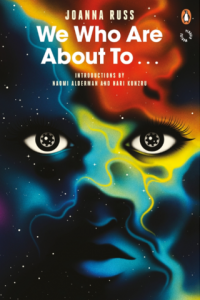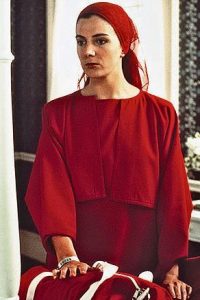Sci-fi novels by women, chosen by Naomi Alderman

Science fiction is often perceived as a man’s genre; people think of “nerds” in box rooms writing stories about 1950s-style lantern-jawed heroes fighting space battles and making it with alien babes. The reason for this cliché escapes me — particularly as the science fiction I love best is written by women.
The history of the women’s movement has been about trying to remake our culture, believing it could be fairer and more just. And that’s what we see in sci-fi; from the very first “true” SF novel, Mary Shelley’s genre-defining Frankenstein, women’s science fiction is interested in investigating humanity, not just replaying Earth’s wars among the stars. And women writers look with hope towards the future — if people or the world or culture were different, what else would change?
My own novel, The Power, is in the tradition of the mind-bending, genre-defying women’s science fiction that I have loved. In my novel, I ask what would the world look like if women were more physically powerful than men. I create a world where suddenly almost all the women develop the power to electrocute at will — anything from a tiny sting to full electric death. Challenging? Yes. But a challenge to think more widely about ourselves and our world.
The Power by Naomi Alderman is published by Viking, £12.99
The Story of the Amulet by E Nesbit (1906)
In this children’s fantasy novel, the protagonists we remember from Five Children and It (pictured above) take a journey into the future. And what they find there is Nesbit’s ideal society, one where the state makes ample time for adults and children to do what pleases them best, and where “men, as well as women, seemed to be in charge of the babies and were playing with them”.

A portrait of Mary Shelley by Samuel John Stump (1831)
Frankenstein by Mary Shelley (1818)
It’s hard to think of another book that has as much of a claim to mark the birth of science fiction as Frankenstein, a novel of unnatural birth and troublesome humanity. Mary Shelley was the daughter of the writer and advocate of women’s rights Mary Wollstonecraft, who died of puerperal fever just after her daughter was born and whose legacy shaped Shelley’s life. It’s strangely fitting, then, that people get the name Frankenstein confused; is it the name of the creator or the monster, the parent or the child?
Sultana’s Dream by Rokeya Sakhawat Hussain (1905)
Written in 1905 and published in The Indian Ladies’ Magazine, this is a sustained piece of brilliantly comic gender-reversed science fiction. It’s a social satire — men are shut up in the zenana while women work and conduct their lives freely. And how was this all accomplished? “Education was spread far and wide among women while early marriage was stopped.”

We Who Are About To . . . by Joanna Russ (1977)
A group of travellers from Earth crash-land on a distant, uninhabited planet. Most of them think they are in one of those heroic SF novels and they’re going to colonise this new world. But the clear-eyed narrator sees the truth; they are lost, light-years from home, and they need to accustom themselves to the idea of finding a good death here. This is a novel about how we cling to heroic fantasy, and how we can break through it to see reality right.

The author Ursula Le GuinDAN
The Birthday of the World by Ursula Le Guin (2002)
Anything by Ursula Le Guin, a science fiction visionary, is worth reading. In this collection of her short fiction, the jewel is the story The Matter of Seggri. On Seggri, genetic engineering means that 17 times as many women are born as men. Le Guin follows this premise through with expert precision; living in f***eries, used to service women who want to have children, men lead lives of pampered imprisonment. In this story Le Guin teases apart privilege from power more finely than a philosophy textbook.

Natasha Richardson in Volker Schlöndorff’s film adaptation of The Handmaid’s Tale (1990)
The Handmaid’s Tale by Margaret Atwood (1985)
The classic of classics, the crème de la crème, and with good reason. Offred is a handmaid, living in the religious state of Gilead, used as a breed-cow by the ruling class. But this isn’t a far-distant planet, it’s America after a right-wing takeover and everything in the novel is terrifyingly plausible.




